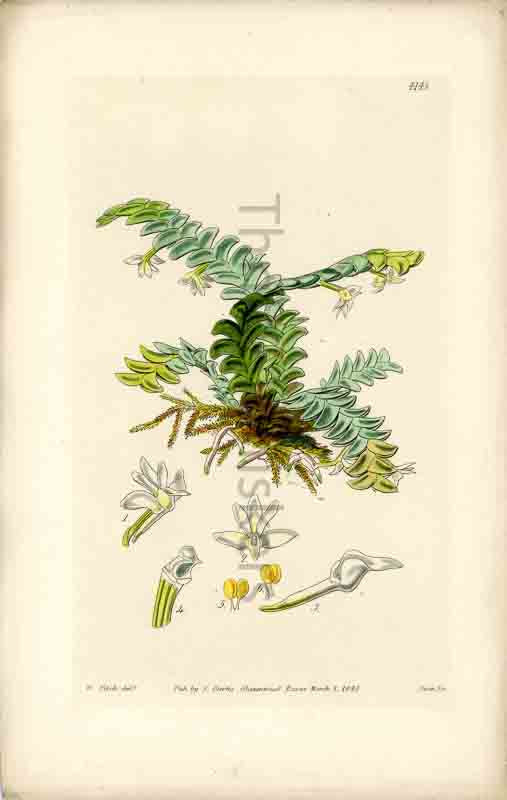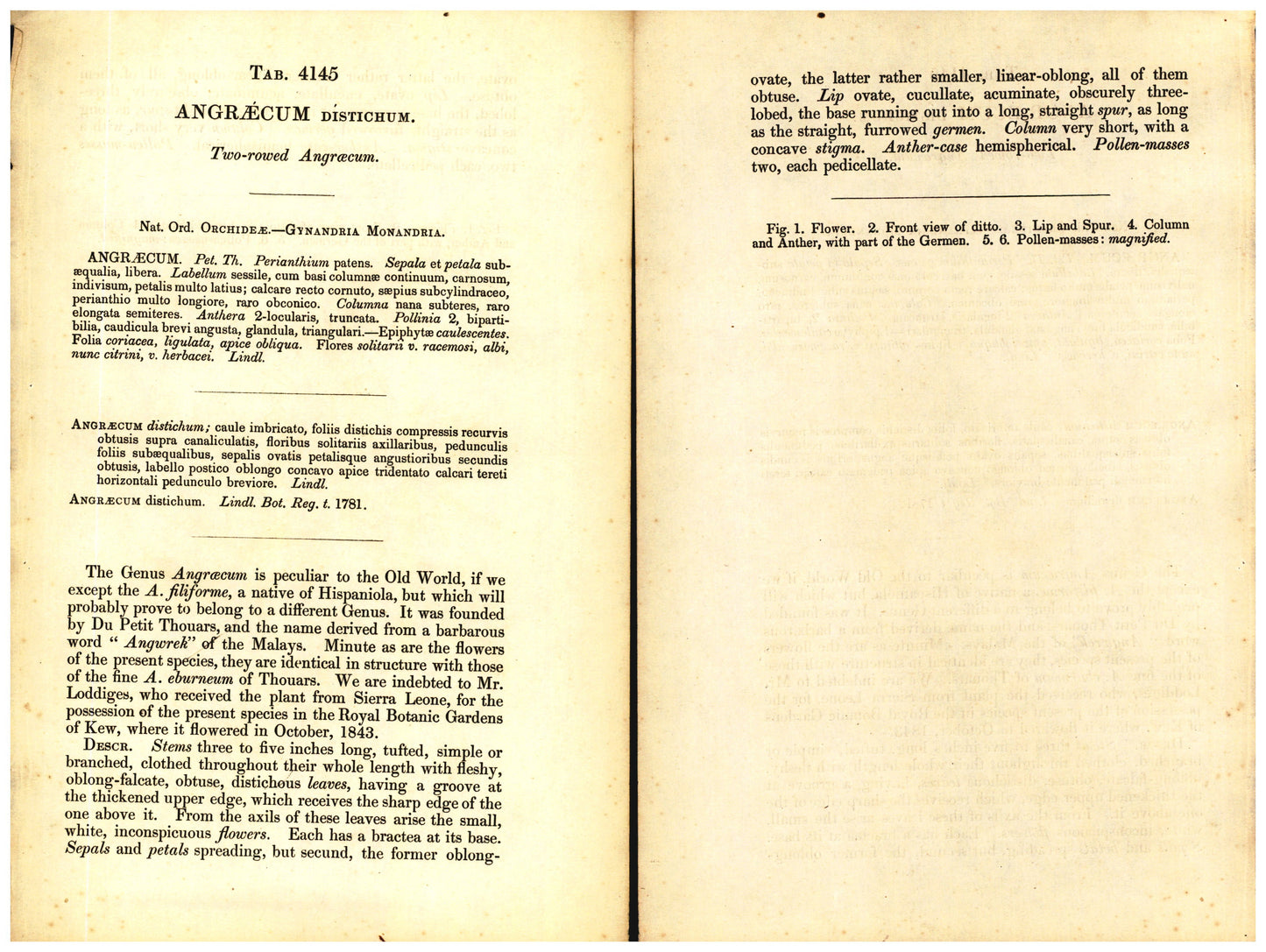Thrifty Whiskers
Plate 4145 Hand-Colored Botanical Print - Digital Download
Plate 4145 Hand-Colored Botanical Print - Digital Download
Couldn't load pickup availability
This is a high-resolution digital download of Plate 4145 from Curtis's Botanical Magazine. The original illustration was hand-colored in the 1800s. This listing includes both the botanical image and its accompanying description tab.
Perfect for art collectors, interior decor, or historical enthusiasts. No physical item will be shipped.
TAB. 4145 lt
ANGRÆCUM DÍSTICHUM. Two-rowed Angræcum.
ovate, the latter rather smaller, linear-oblong, all of them obtuse. Lip ovate, cucullate, acuminate, obscurely three- lobed, the base running out into a long, straight spur, as long as the straight, furrowed germen. Column very short, with a concave stigma. Anther-case hemispherical. Pollen-masses two, each pedicellate. Nat. Ord. ORCHIDEE.-GYNANDRIA MONANDRIA. ANGRÆCUM. Pet. Th. Perianthium patens. Sepala et petala sub- æqualia, libera. Labellum sessile, cum basi columnæ continuum, carnosum, indivisum, petalis multo latius; calcare recto cornuto, sæpius subcylindraceo, perianthio multo longiore, raro obconico. Columna nana subteres, raro elongata semiteres. Anthera 2-locularis, truncata. Pollinia 2, biparti- bilia, caudicula brevi angusta, glandula, triangulari.-Epiphyte caulescentes. Folia coriacea, ligulata, apice obliqua. Flores solitarii v. racemosi, albi, nunc citrini, v. herbacei. Lindl.
Figures
Fig. 1. Flower. 2. Front view of ditto. 3. Lip and Spur. 4. Column and Anther, with part of the Germen. 5. 6. Pollen-masses: magnified. ANGRECUM distichum; caule imbricato, foliis distichis compressis recurvis obtusis supra canaliculatis, floribus solitariis axillaribus, pedunculis foliis subæqualibus, sepalis ovatis petalisque angustioribus secundis obtusis, labello postico oblongo concavo apice tridentato calcari tereti horizontali pedunculo breviore. Lindl. ANGRÆCUM distichum. Lindl. Bot. Reg. t. 1781. The Genus Angræcum is peculiar to the Old World, if we except the A. filiforme, a native of Hispaniola, but which will probably prove to belong to a different Genus. It was founded by Du Petit Thouars, and the name derived from a barbarous word "Angwrek" of the Malays. Minute as are the flowers of the present species, they are identical in structure with those of the fine A. eburneum of Thouars. We are indebted to Mr. Loddiges, who received the plant from Sierra Leone, for the possession of the present species in the Royal Botanic Gardens of Kew, where it flowered in October, 1843.
Botanical Description Stems three to five inches long, tufted, simple or
branched, clothed throughout their whole length with fleshy, oblong-falcate, obtuse, distichous leaves, having a groove at the thickened upper edge, which receives the sharp edge of the one above it. From the axils of these leaves arise the small, white, inconspicuous flowers. Each has a bractea at its base. Sepals and petals spreading, but secund, the former oblong- Mot o W DIO adi of oban sta sdi to oldo 棒
Share





